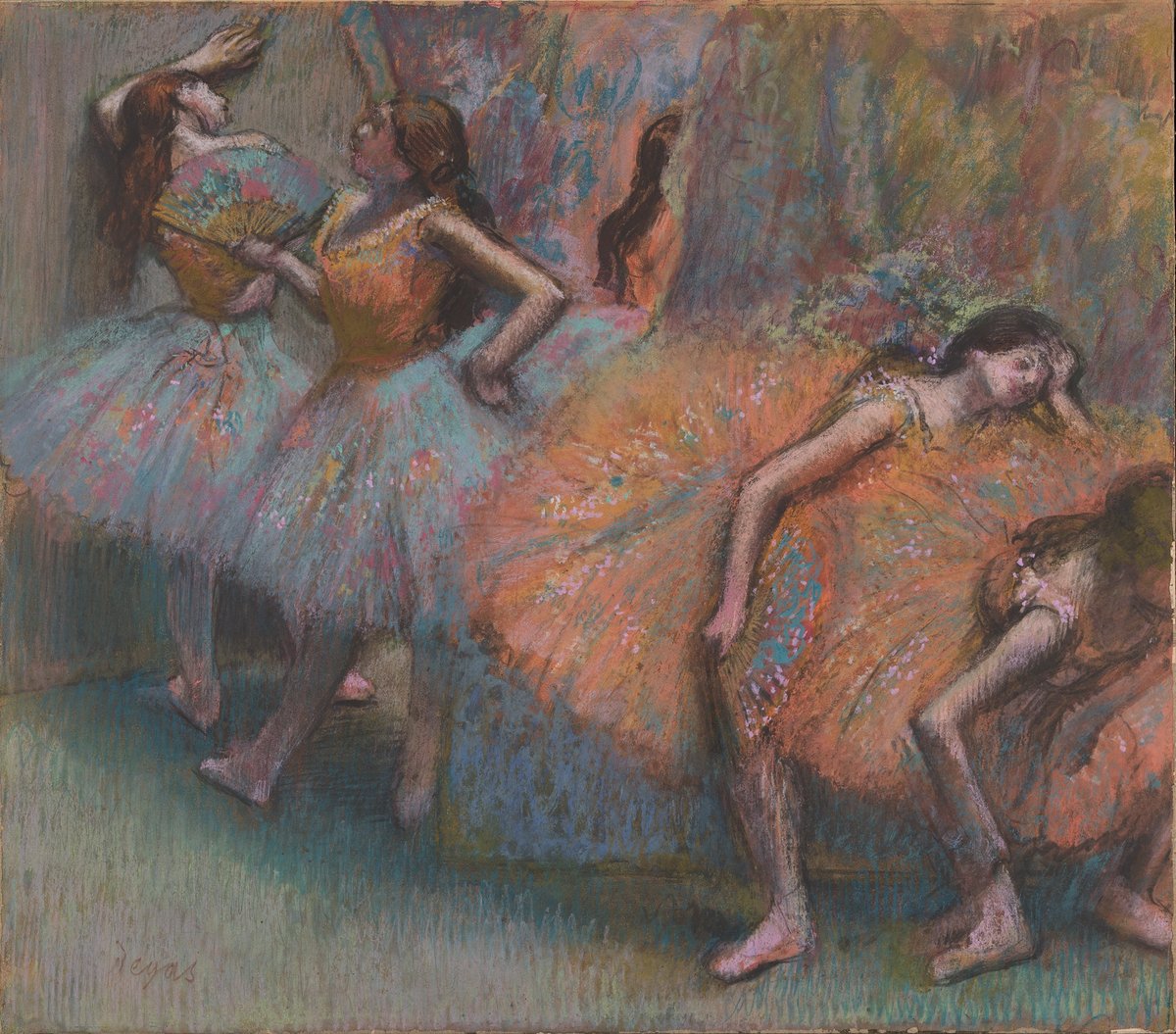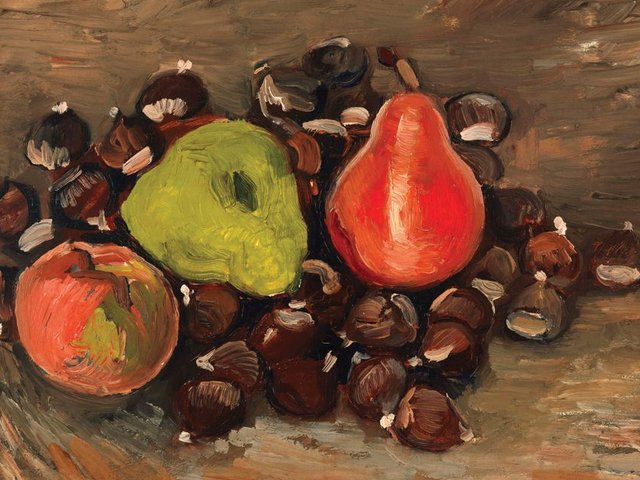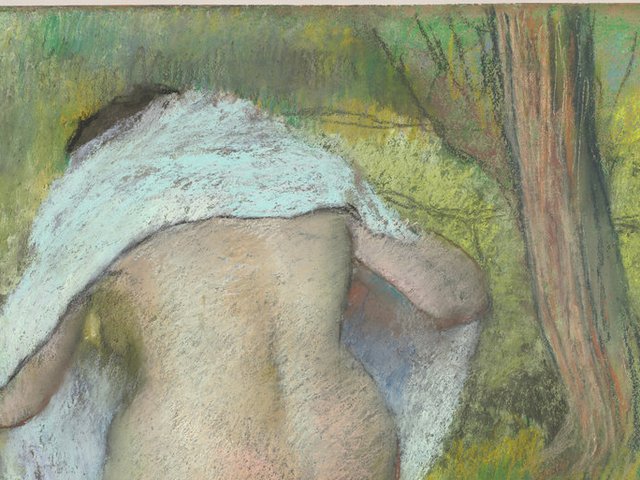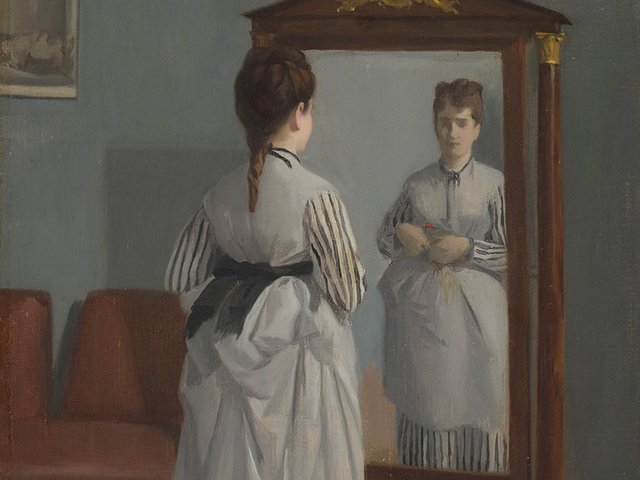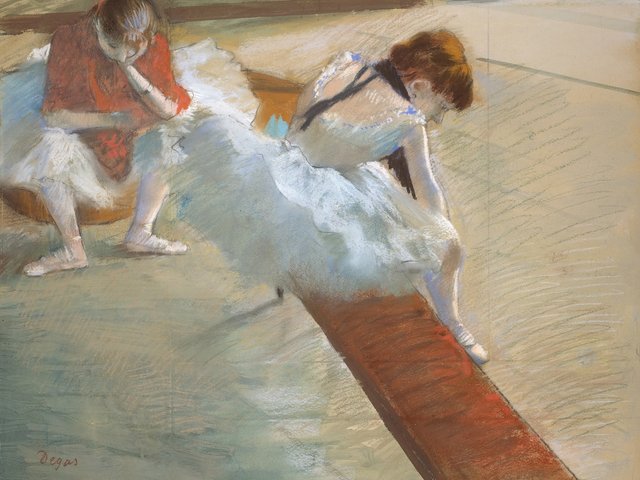The National Gallery in London has announced three major acquisitions, including the work Ballet Dancers (1888) by the French Impressionist Edgar Degas, which is worth £9.4m. The other works are A View of the Sky from a Prison Window (1823) by the German 18th-century painter Carl Gustav Carus and A Banquet Still Life (1622) by the Dutch Golden Age artist Floris van Dijck.
The Degas pastel, depicting five dancers dressed in orange and turquoise tutus, was acquired through the UK government’s Acceptance in Lieu scheme, which allows for inheritance tax debts to be written off in exchange for the acquisition of objects of national importance. The acceptance of the painting from the estate of Ann Marks settled £7.89m in tax. The National Gallery Trust, a charity that supports the gallery, paid the remainder of £1.56m in a deal brokered by Christie’s.
In a statement, the gallery says: “The picture shows the complex pastel technique favoured by Degas during the 1880s, layering, blending and smudging the tones to create the effect of rich, pulsating colour. The scene’s apparent naturalism belies careful composition. Sharp stabs of pure pastel bring out rich highlights.” The work is on show in Room 42.
Carus’s A View of the Sky from a Prison Window (1823) is the first painting by the 19th-century German Romantic painter to enter a UK public collection. The picture was purchased for £396,660 thanks to a legacy (gift in a will) left by the teacher Martha Doris Bailey and her husband Richard Hillman Bailey, a housebuilder. Other contributors include Charles Booth-Clibborn.
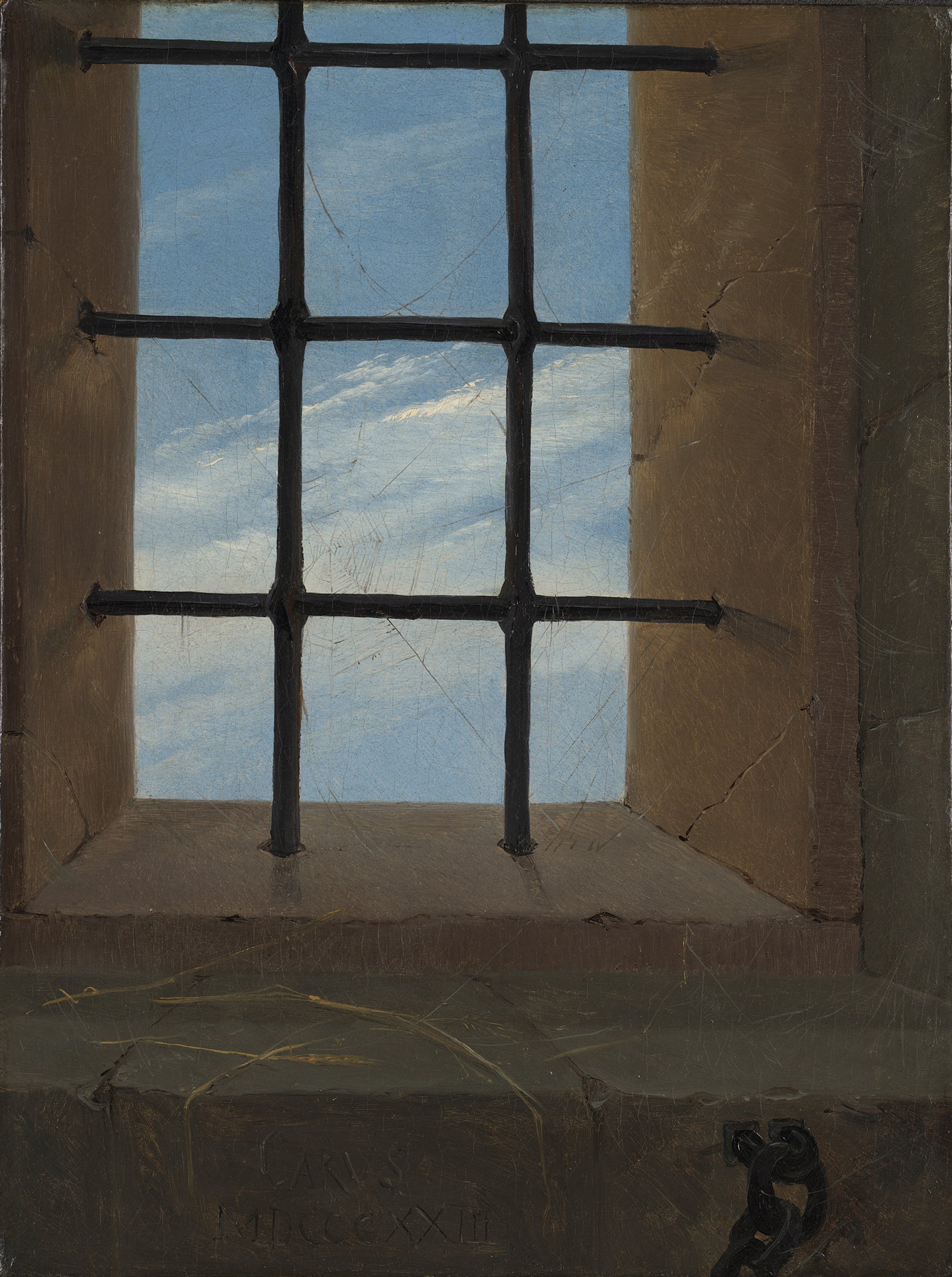
NG6704: Carl Gustav Carus. A View of the Sky from a Prison Window, 1823. Bought via a legacy from Mrs Martha Doris Bailey and Mr Richard Hillman Bailey, and with the support of Mr and Mrs Booth-Clibborn and others, in honour of curator Christopher Riopelle, 2025
Photo © The National Gallery, London
The acquisition, now on display in Room 38, honours Christopher Riopelle’s 27 years as the curator of post-1800 paintings at the National Gallery.
“This small, arresting work was painted in Dresden at the height of Carus’s friendship with [the German Romantic painter] Caspar David Friedrich (1774–1840,” the National Gallery says. “The view looks out through a barred window onto a blue sky streaked with wisps of white cloud, with no features of town of country visible.”
Sarah Herring, the gallery's associate curator of post-1800 paintings, adds in a statement: “Ultimately the picture addresses the dialogue between fear and hope, captivity and freedom, both physical and psychological.”
The legacy of the Bailey couple—which totalled £6.75m—also enabled the gallery to buy A Banquet Still Life (1622; Room 23) by the Delft-born artist Floris van Dijck. The work was bought for £2.9m from a private collection in a private treaty sale brokered by Sotheby’s. The National Gallery Trust also contributed to the cost.

NG6706, Floris van Dijck. A Banquet Still Life, 1622. Bought via a legacy from Mrs Martha Doris Bailey and Mr Richard Hillman Bailey, with the support of the National Gallery Trust, 2025
Photo: © The National Gallery, London
The table depicted is bedecked with fruit, olives, sweets and butter shavings in various blue-and-white Wanli Chinese export porcelain bowls. The National Gallery says that the painting is a “superb example marking the beginning of the Dutch tradition of so-called banquet still lifes; Van Dijck’s compositions are always seen as if from an elevated viewpoint”.
The trio of acquisitions coincides with the bicentenary of the gallery which has unveiled an ambitious collection rehang, entitled C C Land: the Wonder of Art—after its Hong Kong property developer sponsor—and also the revamped Sainsbury Wing.


